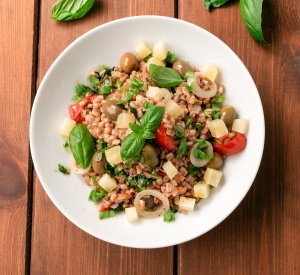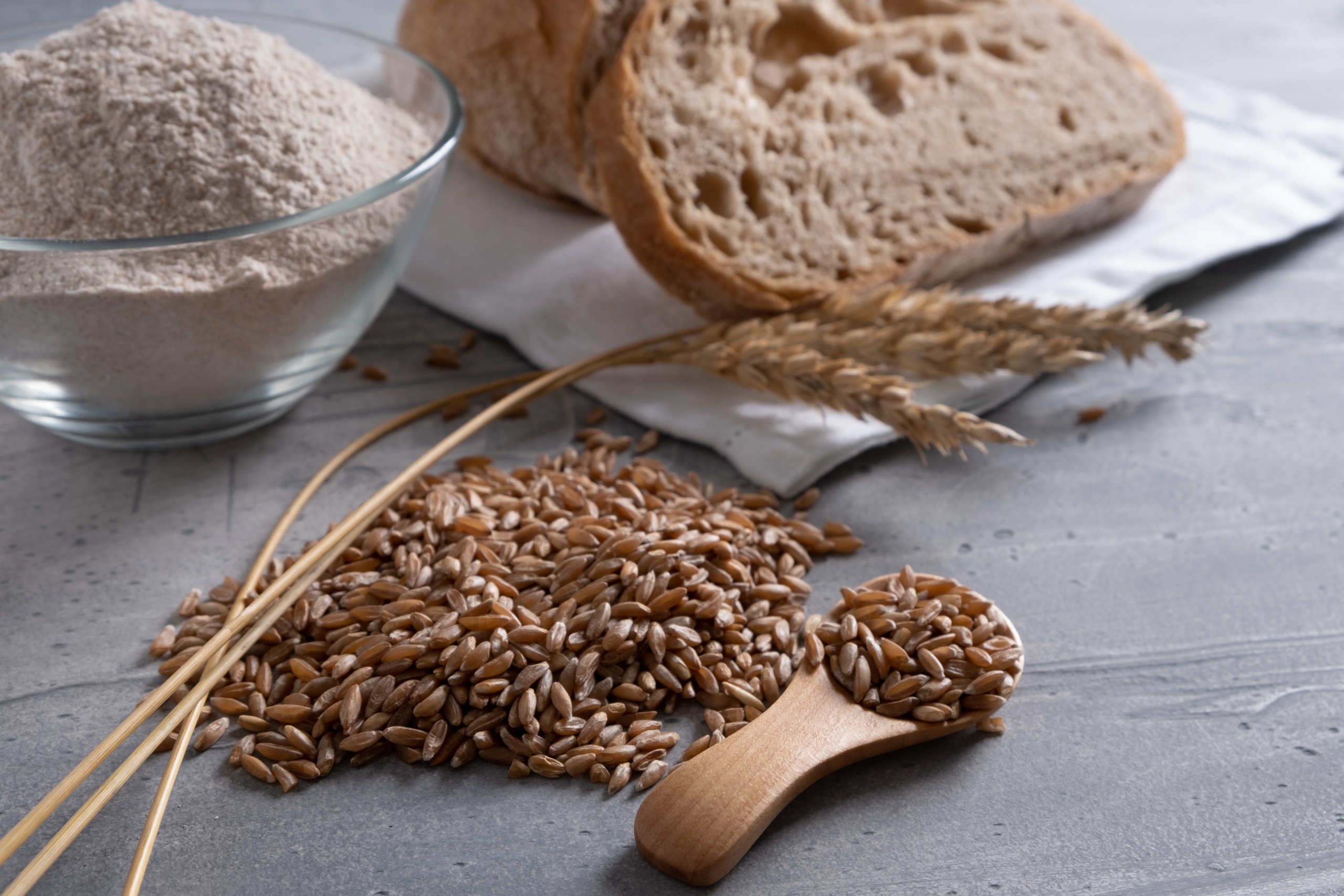“Spelt is the best of grains: it gives a just mind and a joyful spirit.”
— Hildegard of Bingen
Spelt, also known as Triticum spelta, moves through history with the quiet resilience of an ancient crop. Often rediscovered in times of interest in natural diets and traditional farming, spelt holds a place among the earliest cultivated grains. Today, it attracts attention as a whole grain prized for both its nutritional value and historical legacy.
In the 12th century, it found a distinctive advocate in Hildegard of Bingen, a Benedictine thinker whose writings helped preserve early knowledge of medicinal plants and food-based healing. She called spelt “the best grain”, crediting it with the power to nourish the body, lighten the mind, and uplift the spirit.
Who was Hildegard of Bingen?
Hildegard of Bingen (1098–1179) was a writer, herbalist, and composer whose work spanned natural science, music, and medicine. Recognized in contemporary times as an early figure in integrative health, her two major medical treatises, Physica and Causae et Curae, describe hundreds of natural remedies based on plants, stones, and foodstuffs.
Among them, spelt held a privileged place. In Hildegard’s view, it was warming, sustaining, and harmonizing—an ideal grain to support both physical and emotional well-being.
What is spelt?
Spelt belongs to the farro family, a group of ancient wheats that includes einkorn (monococcum), emmer (dicoccum), and spelt (spelta). Of these, spelt is the one most widely cultivated in medieval Europe and the variety Hildegard referenced.
Its origins trace back over 8,000 years to the Fertile Crescent, from where it spread across Europe and became a dietary staple among Egyptians, Romans, and medieval farmers. The grain’s tough outer hull protects it from pests and pollutants, making it naturally resilient. It grows well in poor soils and typically requires no chemical inputs. Genetically unchanged for millennia, spelt remains one of the most intact grains still cultivated today.
Spelt in medieval kitchens
In the Middle Ages, spelt was a staple grain, yet far from mundane. Hildegard advised preparing it with care, regarding cooking itself as part of the healing process.
Spelt bread, naturally leavened and fermented over time, was considered easier to digest and helpful in maintaining bodily balance. Spelt soups—made with broth and wild herbs—were valued for their warming, restorative qualities. Toasted spelt grains were sometimes brewed into a caffeine-free drink, amber in color and gentle in energy.
Spelt flour also featured in external remedies, such as poultices for skin irritations, while spelt hulls filled pillows thought to ease headaches and promote restful sleep.

Hildegard’s perspective on benefits
To Hildegard, spelt was more than sustenance—it was a source of inner balance. She associated it with calm digestion, immune strength, mental clarity, and emotional steadiness. Her descriptions often reflect a holistic sensibility, where food was not simply nutrition, but part of a broader ethic of well-being.
She believed spelt could:
- Support smooth digestion and reduce gastric inflammation
- Enhance mood and mental clarity
- Strengthen resilience and overall vitality
- Improve skin and hair health through internal cleansing
Scientific insights today
Modern nutrition science confirms many of the properties Hildegard praised. Spelt is high in protein (up to 17%) and rich in complex carbohydrates with a low glycemic index. It contains a spectrum of B vitamins, vitamin E, and essential minerals such as iron, magnesium, selenium, and zinc.
Its fat profile includes beneficial unsaturated fatty acids like oleic and linoleic acid. Notably, the gluten in spelt differs structurally from that in modern wheat, which some find easier to digest.
📌 A 2021 study in the Journal of Agricultural and Food Chemistry found that spelt contains significantly higher levels of phenolic antioxidants than common wheat.
How to incorporate spelt today
Spelt fits easily into contemporary diets. Whole berries can be used in soups, grain bowls, or side dishes. The flour—available in whole or semi-whole milled forms—is suitable for baking bread, pizza, pancakes, and desserts. Spelt flakes add nutrition to breakfast, and spelt pasta is a flavorful alternative to standard varieties.
Spelt-based drinks, such as roasted spelt coffee or malt, offer caffeine-free options for those seeking gentle stimulation.
Considerations and precautions
Spelt contains gluten and is unsuitable for people with celiac disease. However, those with non-celiac gluten sensitivity sometimes tolerate it better—though any changes should be discussed with a medical or nutrition professional.
As with all foods, spelt should be part of a varied, balanced diet.
Medieval curiosities
In medieval Europe, loaves of spelt bread were often marked with a cross before baking and given to the sick in monasteries. Spelt malt was used to brew a dense, dark beer that provided nutrition during fasting periods. A simple porridge made of spelt, honey, and goat’s milk was used to support children and convalescents.
A grain bridging past and present
Spelt is a relic of early agriculture that continues to resonate today. For Hildegard of Bingen, it symbolized nourishment not only for the body, but also for the inner life—a food rooted in equilibrium and clarity.
Choosing spelt today reflects a deeper interest in sustainable, unaltered food traditions. In this ancient grain lives a quiet continuity—an echo of old-world knowledge shaped by earth, health, and simplicity.





